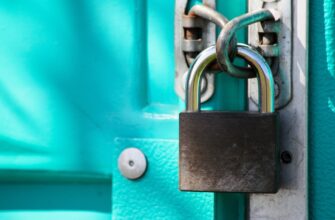Why Cold Storage Backup Is Non-Negotiable for Crypto Security
Imagine losing access to your life savings because a hardware wallet failed or a seed phrase was misplaced. This nightmare scenario is preventable with proper backup funds in cold storage protocols. Cold storage—keeping cryptocurrency offline in hardware wallets or paper wallets—eliminates hacking risks but introduces physical vulnerability. Our comprehensive backup funds in cold storage tutorial ensures your assets survive disasters, human error, and hardware failures. Follow these battle-tested methods to achieve true financial sovereignty.
What Exactly Is Cold Storage?
Cold storage refers to storing cryptocurrency keys completely offline, disconnected from the internet. Unlike “hot wallets” (software-based and internet-connected), cold storage devices like Ledger or Trezor hardware wallets generate and sign transactions offline. This makes them immune to remote hacking—but they remain vulnerable to physical damage, loss, or improper backup procedures. That’s where this backup funds in cold storage tutorial becomes critical.
Step-by-Step Backup Funds in Cold Storage Tutorial
Follow this 7-step process to create failsafe backups:
- Choose Your Hardware Wallet: Purchase a reputable device (e.g., Ledger Nano X, Trezor Model T) directly from the manufacturer to avoid tampering.
- Initialize Offline: Set up the device in a secure location without internet access. Generate a new wallet.
- Document Your Seed Phrase: Write down the 12-24 recovery words on the provided card. Never digitize this phrase—no photos, cloud storage, or typing.
- Create Redundant Backups: Use cryptosteel or engraved metal plates to store seed phrases. Make 2-3 copies.
- Geographically Distribute Backups: Store copies in separate secure locations (e.g., home safe, bank vault, trusted relative’s house).
- Test Recovery: Wipe your device and restore it using one backup to verify functionality.
- Establish a Maintenance Schedule: Check backups annually for damage and update them when adding new assets.
Critical Best Practices for Unbreakable Security
- Never Share Secrets: Anyone with your seed phrase controls your funds. Share storage locations only with inheritors via legal channels.
- Beware of “Multisig” Complexity: While multisignature wallets add security, they complicate backups. Stick to single-sig for simplicity unless you’re an advanced user.
- Water/Fire-Proof Storage: Use titanium plates or fire-resistant bags for physical backups. Paper burns; metal endures.
- Avoid Digital Trails: Purchase hardware wallets with cash when possible. Use VPNs if buying online to obscure your identity.
- Silence Is Golden: Never disclose crypto holdings or backup locations—even to close friends.
FAQ: Your Backup Funds in Cold Storage Questions Answered
Q: How often should I update my cold storage backup?
A> Only when adding new wallet accounts or changing security setups. Existing seed phrases don’t expire—just ensure physical integrity annually.
Q: Can I store multiple cryptocurrencies with one backup?
A> Yes! A single seed phrase backs up all wallets derived from it across chains (Bitcoin, Ethereum, etc.). Verify compatibility with your hardware device.
Q: What if my hardware wallet breaks after backup?
A> Your seed phrase is the true backup. Buy a new device, enter your phrase during setup, and regain access instantly.
Q: Are paper wallets still safe for cold storage?
A> Not recommended. Paper degrades and lacks transaction verification. Hardware wallets with screens provide superior security against tampering.
Q: How do heirs access my funds if I die?
A> Include instructions and backup locations in a legally binding will stored with an attorney. Never include seed phrases in the will itself.
Mastering this backup funds in cold storage tutorial transforms you from a vulnerable holder to a fortified custodian. In crypto, your security protocol is only as strong as your weakest backup. Implement these steps today—before disaster strikes.








